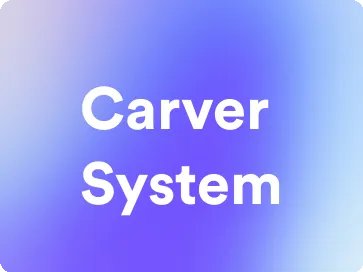The Carver System: A Productivity Framework Revolution
This guide will walk you through the essential elements of using carver system - the productivity method to keep your team productive and engaged.
Try Lark for Free
In today's fast-paced world, productivity is a key concern for individuals and organizations alike. The Carver System, an innovative approach to productivity management, has gained widespread attention for its effective and structured methodology. This article will provide an in-depth analysis of the Carver System, exploring its origins, applications, benefits, drawbacks, and practical implementation strategies.
Understanding the Carver System
What is the Carver System in the Context of Productivity?
The Carver System, also known as the "Getting Things Done" (GTD) methodology, is a comprehensive approach to time management and productivity enhancement. It was conceptualized by Alan Lakein, a renowned author and time management expert, in the 1970s. The system is designed to help individuals and teams prioritize tasks, set achievable goals, and optimize their workflows through a systematic framework.
Origins of the Carver System
The Carver System traces its origins to Alan Lakein's groundbreaking book How to Get Control of Your Time and Your Life, where he introduced the concept of setting priorities and allocating time effectively. Lakein's ideas gained significant traction and evolved into the comprehensive productivity system known as the Carver System.
Who is the Carver System for?
The Carver System is ideally suited for professionals, entrepreneurs, and anyone seeking to enhance their personal productivity. It is particularly beneficial for individuals grappling with multiple responsibilities and competing demands on their time. Additionally, teams and organizations can also adopt the Carver System to streamline their workflows and improve overall productivity.
Evaluating the Carver System
Pros and Cons of the Carver System
Pros:
- Enhanced Time Management: The Carver System provides a structured approach to managing tasks and maximizing time utilization.
- Clear Prioritization: By establishing clear priorities, individuals can focus on essential tasks and avoid distractions.
- Reduced Stress: The systematic nature of the Carver System can alleviate stress by promoting effective time allocation and goal setting.
Cons:
- Complexity: Some individuals may find the initial implementation of the Carver System overwhelming due to its detailed organizational requirements.
- Adaptation Challenges: Shifting to a new productivity framework may pose challenges in terms of habit adjustment and workflow integration.
Use Lark to unleash your team productivity.
Getting Started with the Carver System
Implementing the Carver System involves several key steps:
Step-by-Step Guide for the Carver System
- Capturing Tasks: Begin by capturing all tasks, commitments, and ideas in a trusted system, such as a digital platform or a physical notebook.
- Clarifying Commitments: Review and clarify the specific commitments and desired outcomes associated with each task or project.
- Organizing Tasks: Organize tasks based on their priority, context, and the time required to complete them.
- Reflecting and Engaging: Regularly review and update task lists, ensuring that they align with current priorities and goals.
- Engaging with Tasks: Initiate and execute tasks based on the predefined priorities and commitments.
Actionable Tips for Implementing the Carver System
- Utilize Technology: Leverage productivity apps and digital tools to streamline task management and scheduling.
- Set Realistic Goals: Establish achievable targets and deadlines for tasks to maintain a realistic workload.
- Regular Reviews: Schedule regular reviews of your task lists and priorities to ensure alignment with current objectives.
Learn more about Lark x Productivity
Do's and Dont's
The following table outlines the essential do's and don'ts for effectively implementing the Carver System:
| Do's | Dont's |
|---|---|
| Prioritize tasks based on importance | Avoid overcommitting without careful consideration |
| Allocate dedicated time for specific tasks | Don't procrastinate on critical or time-sensitive tasks |
| Regularly review and update task lists | Avoid micromanaging every aspect of the system |
Use Lark to unleash your team productivity.
Conclusion
The Carver System offers a structured and methodical approach to personal and organizational productivity. By understanding its principles, leveraging its advantages, and proactively addressing its challenges, individuals and teams can effectively harness its benefits and achieve greater efficiency in their endeavors.
